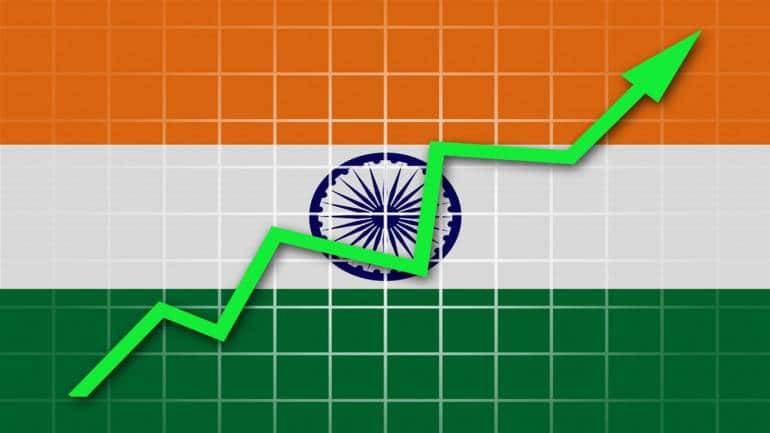Services to beat manufacturing again; economy to slow down at 4.3-4.6%: Experts

Q3FY23 India GDP Growth
As the government of India gets ready to release the macro-economic data for the third quarter of FY2023 on Tuesday, February 28, market experts see the Indian economy growing at a slower pace of 4.3-4.6 percent during the quarter compared to 6.3 percent in Q2FY23.
Like the previous quarter, the services sector has again come to the rescue as many segments in manufacturing are experiencing a slowdown in global demand.
Experts say that economic activity was uneven in Q3, in spite of robust demand for contact-intensive services, and upbeat festive season sentiment.
Trends in government spending were disparate, with an expansion in revenue spending, along with a base effect-led contraction in capital spending.
Experts’ expectations
Most experts expect the growth rate to be sub-five percent due to the higher base of the previous quarters, as the economy moved back to normality post Covid.
Rahul Bajoria, MD & Senior Regional Economist, APAC, Barclays Investment Bank, expects India’s Q3FY23 GDP to rise 5 percent year-on-year (YoY), slowing from 6.3 percent in Q2FY23.
“We think a resilient domestic economy and continued increase in services activity will prop up India’s growth, with only a modest drag coming from manufacturing and exports due to external headwinds,” Bajoria said in his note.
Anmol Das, Head of Research, Teji Mandi, said that, “high inflation and reduced per capita spending post-pandemic tightens our Q3FY23 GDP expectations, despite the festive season. We expect the GDP growth rate to be around 4.5 percent.’’
Suvodeep Rakshit, Senior Economist, Kotak Institutional Equities, pegs the growth for the quarter at 4.3 percent, the lowest among the experts that Moneycontrol spoke to.
Services shine
The services sector is expected to be the largest contributor to growth, due to the continued double-digit growth in the trade, hotels, and transport sectors, as well as in financial services. Travel and tourism segments have continued to see positive growth as leisure as well as business travel has come back strongly. This is largely in line with elevated activity levels shown by high-frequency indicators, which suggests that pent-up demand has still not retreated.
The services PMI has improved month after month through October to December, and this momentum is likely to continue as urban demand does not look like it’s softening anytime soon.
Continued double-digit credit growth due to clean balance sheets and robust GST e-waybills suggest resilient overall growth in the financial services sector, said Barclays in its note.
“Services sector was a big driver of the previous quarter’s GDP growth, and should continue to provide a similar push this quarter as well. However, as the effect of a favourable base fades, the extent of growth in services should moderate,” said Vivek Goel, Joint Managing Director, Tailwind Financial Services.
Manufacturing, agri drag
Manufacturing is likely to be a drag on GDP growth in the coming quarters as exports are seen to be impacted due to a global slowdown, as rising inflation curbs consumer spending.
“Traditionally a strong quarter for the retail and consumption sectors, Q3FY23 was a little disappointing and mostly below expectation with sectors like metals, oil & gas, consumer discretionary, apparels, jewellery, FMCG, etc., dragging down the growth,” said Das.
According to initial estimates of kharif production, experts expect a mixed trend in crop output, with rise in sugarcane, cotton, coarse cereals, and oilseeds, and a decline in rice and pulses.
Bajoria expects agriculture growth to slip to 4 percent YoY in Q3FY23, down from 4.6 percent in Q2FY23.
Rural economy: uncertainty prevails
The rural economy continues to witness a slowdown. For the overall health of the Indian economy to improve, the rural economy needs to pick up pace.
“The rural economy is highly sensitive to the performance of the agricultural sector. A good crop season will induce growth in the rural economy,” said Das.
However, per the government’s estimates, kharif crop production is 6 percent lower than last year. This has raised concerns about the revival of the rural economy.
“Rural wage growth has been trailing inflation. Also, rural inflation has been higher than urban inflation. This has impacted rural consumption and sentiment,” said Divam Sharma, Founder, Green Portfolio.
Thus, a bountiful rabi harvest will go a long way in aiding rural wage growth and demand revival.
According to the Reserve Bank of India’s Monetary Policy Committee, the robust sales of tractors and commercial vehicles indicate a revival of the rural economy in Q1FY24.
“Though it remains weak, there is a gradual improvement in the rural economy. A more durable improvement would hinge on higher spending on rural infrastructure by the state and union governments, as well as higher realisations along with steady crop production volumes.”
With sticky core inflation and uncertain macros, the outlook on the rural economy isn’t positive. Further push from the union government this election year might be just what the doctor ordered.
Disclaimer: The views and investment tips of investment experts on Moneycontrol.com are their own and not those of the website or its management. Moneycontrol.com advises users to check with certified experts before taking any investment decisions.









